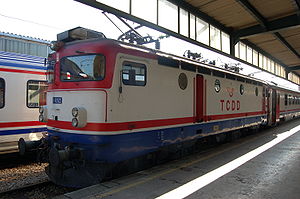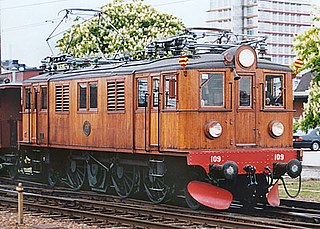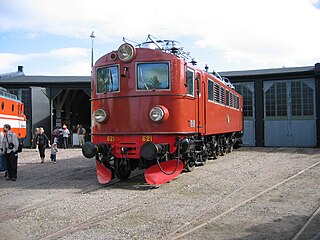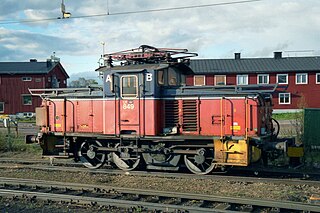This article needs additional citations for verification .(March 2008) (Learn how and when to remove this template message) |
| TCDD E52500 | |||||||||||||||||||
|---|---|---|---|---|---|---|---|---|---|---|---|---|---|---|---|---|---|---|---|
TCDD E52522 at Haydarpaşa | |||||||||||||||||||
| |||||||||||||||||||
| |||||||||||||||||||
| |||||||||||||||||||
| |||||||||||||||||||
TCDD E52500 is a series of electric locomotives used by the Turkish State Railways, comprising 22 class 441-9 locomotives leased from Željeznice Federacije Bosne i Hercegovine in Bosnia-Herzegovina. They are used throughout the electrified parts of the Turkish rail network. The locomotives have a power output of 3,860 kW and are capable of 120, 140 or 160 km/h speed depending on the version.

An electric locomotive is a locomotive powered by electricity from overhead lines, a third rail or on-board energy storage such as a battery or a supercapacitor.

The State Railways of the Republic of Turkey, abbreviated as TCDD, is a government-owned national railway company responsible with the ownership and maintenance of railway infrastructure in Turkey, as well as the planning and construction of new lines. TCDD was formed on 4 June 1929 as part of the nationalisation of railways in Turkey.
The locomotives were originally built from 1967 onwards [1] for Yugoslav Railways by ASEA of Sweden and Končar in Croatia, then part of Yugoslavia. They were based on ASEA's Rb design for Swedish Railways.
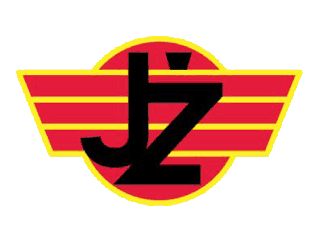
Yugoslav Railways, with standard acronym JŽ, was the state railway company of Yugoslavia, operational from the 1920s to the 1990s.

Allmänna Svenska Elektriska Aktiebolaget was a Swedish industrial company. In 1988 it merged with the Swiss company Brown, Boveri & Cie (BBC) to form ABB Group. ASEA still exists, but only as a holding company owning 50% of the ABB Group.

Sweden, officially the Kingdom of Sweden, is a Scandinavian Nordic country in Northern Europe. It borders Norway to the west and north and Finland to the east, and is connected to Denmark in the southwest by a bridge-tunnel across the Öresund, a strait at the Swedish-Danish border. At 450,295 square kilometres (173,860 sq mi), Sweden is the largest country in Northern Europe, the third-largest country in the European Union and the fifth largest country in Europe by area. Sweden has a total population of 10.2 million of which 2.4 million has a foreign background. It has a low population density of 22 inhabitants per square kilometre (57/sq mi). The highest concentration is in the southern half of the country.
The first fifteen locomotives were delivered to TCDD in 1998, followed by five more in 1999 and two in 2004 and 2005 respectively. They have been modernised by having the diodes replaced with thyristor rectifiers, making them similar to the Rc, the thyristor-based successor to the Rb.
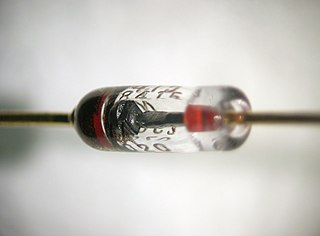
A diode is a two-terminal electronic component that conducts current primarily in one direction ; it has low resistance in one direction, and high resistance in the other. A diode vacuum tube or thermionic diode is a vacuum tube with two electrodes, a heated cathode and a plate, in which electrons can flow in only one direction, from cathode to plate. A semiconductor diode, the most common type today, is a crystalline piece of semiconductor material with a p–n junction connected to two electrical terminals. Semiconductor diodes were the first semiconductor electronic devices. The discovery of asymmetric electrical conduction across the contact between a crystalline mineral and a metal was made by German physicist Ferdinand Braun in 1874. Today, most diodes are made of silicon, but other materials such as gallium arsenide and germanium are used.

A rectifier is an electrical device that converts alternating current (AC), which periodically reverses direction, to direct current (DC), which flows in only one direction.

The SJ Class Rc is the most used electric locomotive in Sweden. Rc is a universal locomotive used both in freight and passenger trains. The largest operator is Green Cargo, although SJ, Veolia Transport, Tågåkeriet, Hector Rail and the Swedish Transport Administration operate it as well.
Two units were scrapped after the Tavşancıl accident in 2004. The two replacement units delivered in 2004-05 have higher top speeds that the other units, who could only run at 140 km/h.
These locomotives were withdrawn from TCDD on April 3, 2011 upon finish of the lease contract. The last 8 sets were taken out from the fleet in 2014. [2]
